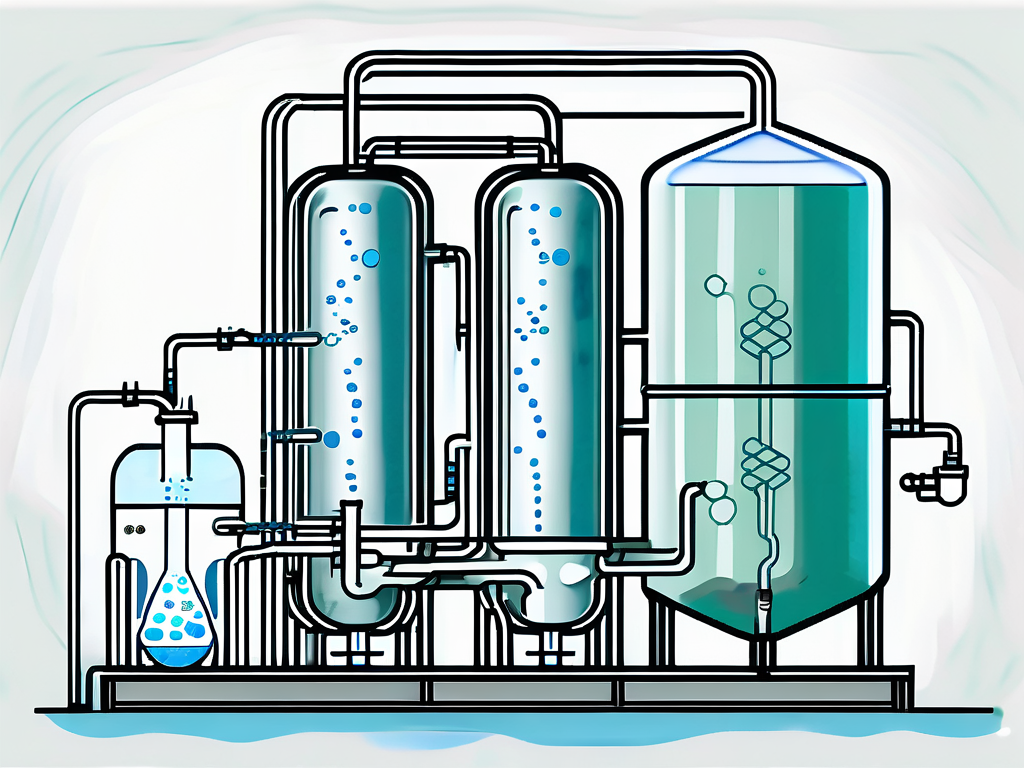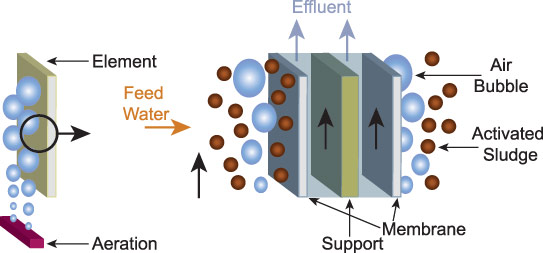The Advantages of Membrane Bioreactors in Sustainable Wastewater Management
Membrane bioreactors (MBRs) stand for a pivotal innovation in sustainable wastewater management, effectively combining biological therapy with advanced membrane layer filtration modern technology. This combination not just enhances effluent high quality by efficiently removing impurities yet likewise opens opportunities for water reuse in different applications, thus addressing the pushing need for source preservation. The portable layout of MBRs adds to significant decreases in ecological impact and functional expenses. As the need for lasting services heightens, checking out the diverse benefits of MBRs might reveal unanticipated ramifications for the future of wastewater therapy systems.
Overview of Membrane Layer Bioreactors
Membrane layer bioreactors (MBRs) stand for a significant improvement in wastewater therapy modern technology, incorporating organic destruction with membrane purification to enhance the effectiveness of the therapy process. This ingenious system incorporates the advantages of standard turned on sludge processes with membrane technology, enabling for enhanced solid-liquid separation. MBRs use semi-permeable membranes to different treated water from biomass, resulting in high-grade effluent that can be recycled or securely discharged right into the environment.
The operational layout of MBRs generally includes a bioreactor where microorganisms damage down raw material, adhered to by a membrane unit that filterings system the combined liquor. This setup not just decreases the footprint of the therapy center yet likewise permits higher biomass focus and lowered hydraulic retention times. In addition, MBRs are capable of treating a larger variety of pollutants, consisting of virus and nutrients, making them suitable for different applications, from local wastewater treatment to industrial effluent processing.
The assimilation of MBRs into wastewater administration systems is indicative of a growing trend towards sustainable and reliable methods in environmental design. Their capacity to produce premium effluent while lessening room demands settings MBR technology as a principal in modern-day wastewater therapy options.
Improved Effluent Top Quality

The membrane layer purification procedure serves as a physical obstacle, enabling the retention of microorganisms and particulate matter, which adds to a clearer and cleaner effluent (Membrane Bioreactor). Furthermore, MBRs run at greater biomass concentrations than traditional activated sludge systems, advertising extra efficient biodegradation of contaminants. This results in a reduction in biochemical oxygen demand (BODY) and complete suspended solids (TSS) levels in the last effluent
Furthermore, MBRs show outstanding performance in treating tough wastewater structures, such as industrial effluents and wastewater with high nutrient lots. As a result, the effluent generated is commonly of greater quality, enabling for more flexible disposal choices and minimized environmental effect. Ultimately, the boosted effluent high quality attained via MBR innovation underscores its vital duty in progressing lasting wastewater monitoring methods.
Water Reuse Opportunities
The high-quality effluent created by membrane bioreactors (MBRs) opens considerable possibilities for water reuse in different applications. MBRs efficiently get rid of pollutants, including microorganisms, suspended solids, and raw material, causing cured water that fulfills or surpasses regulative criteria for reuse. This quality permits the implementation of water recycling campaigns throughout varied markets.
One famous application remains in agriculture, where dealt with wastewater can be utilized for watering, advertising see this page lasting farming methods while conserving freshwater sources. Additionally, MBR-treated effluent can be made use of for commercial processes such as cooling, cleaning, and as a procedure water resource, substantially reducing the demand for safe and clean water in these procedures.
In city atmospheres, MBRs facilitate making use of reclaimed water for landscape irrigation, commode flushing, and other non-potable uses, contributing to the overall resilience of water system systems. The combination of MBR modern technology in decentralized systems aids in taking care of localized water demands, specifically in water-scarce regions.
Lowered Ecological Effect
Exactly how can the adoption of membrane layer bioreactors (MBRs) contribute to a lowered ecological impact in wastewater administration? MBRs significantly improve the treatment performance of wastewater while lessening eco-friendly disruptions. Membrane Bioreactor.
Furthermore, MBRs run at reduced hydraulic retention times contrasted to standard systems, leading to smaller sized therapy plant footprints. This small layout decreases land use, therefore preserving all-natural environments and biodiversity. The process also generates less sludge than standard techniques, minimizing disposal challenges and lowering greenhouse gas emissions associated with sludge administration.
Furthermore, MBRs promote the healing of beneficial resources, such as water and nutrients, adding to a circular economy. By making it possible for water reuse for irrigation or commercial procedures, MBRs assist reduce freshwater scarcity, therefore promoting lasting water use techniques. Ultimately, the fostering of MBR innovation stands for a substantial stride towards reducing the ecological influence of wastewater administration systems.
Financial Advantages of MBRs

In addition, MBRs help with the production of high-quality effluent, which can be recycled for numerous applications, such as agricultural watering and industrial procedures - Membrane Bioreactor. This reuse ability can considerably decrease water procurement expenses, giving a monetary incentive for industries encountering stringent water policies
The compact style of MBR systems additionally leads to reduced land demands, which is specifically important in urban areas where genuine estate is costly. By minimizing area, sectors and communities can save money on land procurement and maintenance expenses.
Furthermore, MBRs commonly need less regular additional reading maintenance and have a longer life-span than standard systems, additionally adding to cost financial savings. In summary, the financial benefits of MBRs-- varying from decreased functional expenses to land cost savings and effluent reuse-- make them an engaging selection for sustainable wastewater monitoring, supplying both lasting and instant financial benefits.
Verdict
Membrane layer bioreactors represent a transformative approach to sustainable wastewater administration, incorporating biological therapy with innovative membrane purification for premium effluent high quality. Their capability for reliable contaminant removal assists in water reuse, therefore saving crucial freshwater resources. Furthermore, MBRs add to lowered ecological effects via portable designs and lower sludge generation. Economic benefits further enhance their viability, making MBRs an appealing remedy for addressing the challenges of wastewater therapy and advertising sustainable resource monitoring.
Membrane layer bioreactors (MBRs) stand for an essential improvement in lasting wastewater administration, efficiently merging biological treatment with sophisticated membrane filtering technology.Membrane layer bioreactors (MBRs) represent a significant advancement in wastewater treatment technology, integrating biological deterioration with membrane filtering to boost the go performance of the therapy procedure.Attaining improved effluent top quality is one of the most substantial advantages of utilizing membrane bioreactors (MBRs) in wastewater therapy.Furthermore, MBRs show superb efficiency in dealing with difficult wastewater make-ups, such as commercial effluents and wastewater with high nutrient lots.Incorporating membrane bioreactors (MBRs) right into wastewater monitoring not just lowers environmental influence but likewise provides substantial economic benefits.